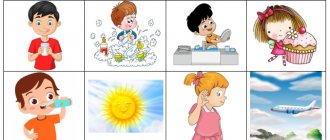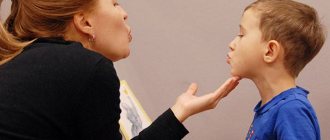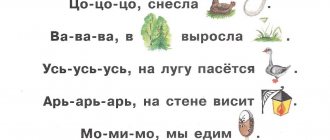Collocations (90)
- small homeland
- small man
- little of
- errand boy
- Sissy
- megalomania
- manna from heaven
- Mass culture
- handyman
- master of his craft
- material well-being
- material goods
- material values
- mother's love
- bearish angle
- disservice
- between two fires
- between this and then
- between a rock and a hard place
- between us
- between heaven and earth
- between them
- by the way
- between themselves
- between Scylla and Charybdis
- meanwhile
- interpersonal relationships
- Sales Manager
- My name is
- measures of influence
- local
- scene
- location
- habitat
- a place under the sun
- place of residence
- place of work
- Place of Birth
- dear to my heart
- minor mood
- global community
- Milky Way
- I think
- I'm really sorry
- a lot others
- a lot of time
- many people
- a lot of work
- many times
- much more
- mobile app
- mobile phone
- can be
- my regards
- May be
- may cause
- can be
- it would be possible
- can be distinguished
- you can speak
- can be seen
- you can note
- can be attributed
- one can assume
- can be done
- one can conclude
- one might say
- it could be considered
- it can be argued
- brainstorm
- younger generation
- young man
- young people
- wet behind the ears
- reckless
- frost on the skin
- manhood
- male genital organ
- male member
- musical composition
- musical instrument
- pangs of conscience
- municipality
- goosebumps
- goosebumps crawl on the skin
- wouldn't hurt a fly
- we see
- we are glad
- we believe
- to put it mildly
On this page you can find the most popular words starting with "m" (at the beginning of the word - M). The list is sorted alphabetically. You can add your options in the comments. If you click on a word, its synonyms and meanings will open.
See also: words containing M.
Open page 2 of words on m →
- The search took 0.008 seconds. Remember how often you look for something to replace a word with? Bookmark sinonim.org to quickly search for synonyms, antonyms, associations and sentences (press Ctrl+D).
Sound [s]
Preparatory stage
Lesson 1
Breathing exercises
"Harmonic". I. p. - stand straight, lower your arms. Place your palms on your tummy and take a deep breath through your nose. Hold your breath for 1-2 seconds. Exhale through your mouth.
Development of exhalation force. Developing the correct direction of the air stream along the midline of the tongue
"Cold wind". Having drawn air into your lungs, blow forcefully through your lips extended forward with a tube. Bring the back of your hand to your mouth. You should feel a sharp, beating cold stream.
Exercises for lips and facial muscles
Game exercises
"Smile". “We are glad to meet a friend.” Stretch your lips in a smile to the limit and hold them in a tense position for some time. The teeth are closed. Repeat 3-4 times.
"Cranky monkeys." Movements with closed lips to the right and left. (If you have difficulty, help with your index fingers.)
Exercises to flatten and strengthen the lateral edges of the tongue
"Track". Place your wide, spread tongue on your lower lip and hold it in this position for a count of 5.
“The tongue is looking for a crack in the fence.” Extending the spread tongue between the teeth and biting it. (Teeth marks should remain on the tongue.)
“The tongue is sleeping on the crib.” Descent of the back of the tongue. Press the tip of the tongue against the lower incisors and lower the back.
Note. In case of difficulty, ask the children to cough and yawn, while the soft palate involuntarily rises and the root of the tongue falls. You can interest children by offering to meet or say hello to the little tongue.
Development of phonemic awareness
Isolation of the sound [s] against the background of syllables and words among sounds that are distant in acoustic and articulatory characteristics.
Game "Catch the Sound". The child should clap his hands when he hears the sound [s]. First, the teacher pronounces the sounds [l], [s], [r] [s], [l], [m], [b], [s], then the syllables la, so, ro, su, pa, su, sy , ba.
If a child identifies a sound from a sound or syllabic series, the words
poppy, cheese, souk, shelf, son, bun, lamp, catfish are given.
Development of the voice and switchability of the organs of the articulatory apparatus
Pronunciation of vowel sounds with changes in the strength and pitch of the voice.
“Let’s sing a lullaby to the doll”: a-a-a-a-a-a-a-a-a.
“Toothache”: o-o-o
"Steamboat whistle": ooh-ooh.
Lesson 2
Breathing exercises
Development of exhalation force
Blowing through a tube. Blowing soap bubbles. Comparison of expiratory duration. Pronouncing the sound [f] (long exhalation), pronouncing the sound [t] (short exhalation).
Developing the correct direction of the air stream along the midline of the tongue
Blow a paper snowflake off your palm. Whose snowflake will fly farther?
Exercises for lips and facial muscles
"We are having fun". "Smile". The lips are in a smile, the teeth are brought together to 2 mm.
"Sponges are swinging on a swing." Teeth and lips are clenched. Alternately lift the corners of your mouth with the help of your fingers.
“Sleep, little peephole, sleep, other one. The right eye sleeps - wakes up. The left eye sleeps and wakes up.” Alternately opening and closing the eyes.
Tongue exercises
"The tongue is tanning." Place your tongue on the bottom of your mouth. “The tongue dived to the bottom of the river.” "Let's see where the little tongue lives." Lowering the tongue to the bottom of the mouth.
“The tongue fits through the crack of the door.” Biting the tongue with teeth from tip to middle and vice versa.
"Monkey Teasing" Place your wide tongue on your lower lip and pronounce the syllables five-five-five-five-five.
Development of the voice and switchability of the organs of the articulatory apparatus
"Conversation between the dogs Barbosa and Pushka." Pronouncing syllable combinations pa-ba, py-by, po-bo, pu-bu
whisper, quietly and loudly.
Development of phonemic awareness
Isolating the sound [s] among sounds that are similar in acoustic and articulatory characteristics. Sounds: [s], [z], [s], [sh], [ts], [s]. Syllables: sa, for, so, sha, tso, su, zy, sy.
The words
dog, bunny, sun, fur coat, boots, garden
, etc. The child raises his hand or claps his hands if he hears the sound [s].
Lesson 3
Breathing exercises Developing exhalation power
"Put out the candle." Developing an intense intermittent exhalation while pronouncing fuuuuu.
Developing the correct direction of the air stream along the midline of the tongue
"The storm is howling." Bring a bottle with a narrow neck to your lower lip and blow. If noise appears at the same time, it means that the air stream is directed correctly.
Exercises for lips and facial muscles
“The monkey is smiling, and the baby elephant is ready to drink some water.”
Lips in a smile (hold for a count of 5-6). Alternating positions - lips in a smile and “tube”.
“My teeth hurt on the right side. The teeth on the left side hurt.” Alternately raising the corners of the mouth while simultaneously closing the corresponding eye.
Tongue exercises
"Raindrops are pattering on the roof." Bite your wide tongue with your teeth and pronounce the syllables ta-ta-ta-ta-ta-ta.
"Shovel". Place a wide tongue on the lower lip so that the side edges of the tongue touch the corners of the mouth. The language is calm, not tense. If the tongue does not relax, suggest squeezing your lips tightly, then stretch them into a smile and push your tongue between them.
Exercises to develop the ability to form a bow with the lateral edges of the tongue with the upper molars
“The baby learns to pronounce the sound [i].” Place the tip of your tongue behind your lower teeth and pronounce the sound [i]. Make sure that the dimple in the tongue is exactly in the middle.
"Donkey's Song" Pronouncing the sound combination ia.
"Boat". Stick your tongue out of your mouth and fold it into a boat (“groove”). If the exercise does not work, you can place a thin stick or probe on the middle part of the tongue.
"Fungus". I will collect different mushrooms in a basket - russula, moss mushroom, etc. Sucking the tongue to the roof of the mouth. (Recommended for use when correcting lateral sigmatism.)
Development of switchability of the organs of the articulatory apparatus and coordinated work of the lips and tongue
Pronouncing the vowels i-yu, yu-ya, i-e, e-ya; i-i-e; and-i-e-yu.
Development of phonemic awareness
Isolating the sound [s] from words. Find toys whose names contain the sound [s], from a number of others ( owl, fox, bear, dog, baby elephant, car, giraffe, donkey
)
.
Determining the position of the sound [s] in the words owl, baby elephant, forest, nose.
Lesson 4
Breathing exercises
Development of exhalation force
Developing the correct direction of the air stream along the center line
“The sled went down the hill.” Smile, lower the tip of your tongue behind your lower teeth, and raise your back up. Exhale.
Developing a long, strong exhalation while pronouncing the sound combinations iffffff, iffffff for a long time.
Lip exercises
Lips in a smile (count to 10).
"The boat rocks on the waves." Alternately lifting the corners of the mouth up (with and without the help of hands).
Tongue exercises
“The tongue is sick and lies in bed.” Open your mouth wide and cough (the tongue involuntarily drops to the bottom of the mouth). Place the tongue in a “path” on the bottom of the mouth so that a small tongue appears. (Hold in this position for as long as possible.)
"Teasers." Place your wide tongue on your lower lip and say: bya-bya-bya-bya-bya, five-five-five-five-five-five
(with a change in intonation).
The tongue is “grooved” inside the mouth.
Note. If the exercise does not work, use a bottle with a narrow neck. When you blow into a bubble, a round gap involuntarily appears in your tongue.
"Funny Clowns" Arching of the back of the tongue upward while the tip rests on the gums of the lower incisors. Pronouncing the sound combination i-hee-hee.
Development of switchability of the organs of the articulatory apparatus
“The tongue swings on a swing.” Pronouncing the syllables ya-la, ya-la, ya-la,
gradually increasing their number in one exhalation.
Development of phonemic awareness
Distinguishing words that sound similar: bear
-
bowl, helmet
-
porridge, cheese
-
ball, salt
-
play naughty
(based on pictures).
Finding pictures with the sound [s] in their names on the topics “Vegetables” and “Fruits”.
Lesson 5
Development of exhalation force
Developing the correct direction of the air stream along the midline of the tongue. "The wind shakes the leaf." Lips in a smile, teeth open. Blowing on a protruding tongue lying on the lower lip.
Lip exercises
“The hippopotamus has his mouth open, the hippopotamus is asking for rolls.” Smile. On the count of “one,” clench your lips tightly, and on the count of “two,” open your mouth wide.
Tongue exercises
Arching of the back of the tongue upward while the tip rests on the gums of the lower incisors. Pronounce i, hee, ee.
Raising and lowering the middle part of the tongue (the back of the tongue with the tip of the tongue lowered at the lower gums.
"Boat". Raise the side edges of the tongue until you have a depression in the middle of the tongue.
"Cheerful children." The starting position is the same. Pronounce the sound combinations ihi-hi, ihi-hi, ihi-hi.
Development of switchability of the organs of the articulatory apparatus and development of coordinated work of the lips and tongue
"Alien Conversation" Pronouncing the syllables ti-ti-ti, cha-cha-cha, te-te-te
(with a change in stress and intonation).
Development of phonemic awareness and simple types of phonemic analysis
— Is there a sound [s] in the words cabbage, beets, radishes, beans, lettuce, garlic?
?
- Find vegetables whose names contain the sound [s]. Where is the sound [s] heard in the word salad
?
In the word garlic
?
In the word cabbage
?
Development of logical thinking
Game "Fifth Odd". Cabbage, beets, potatoes, radishes, apricots.
Set aside the extra picture.
Lesson 6
Development of exhalation force
Developing the correct direction of the air stream along the midline of the tongue
Smile. Lower the tip of your tongue behind your lower teeth, raise your back in a “mound”, and exhale.
Lip exercises
Raising and lowering of the upper lip exposing the upper teeth.
Alternate raising and lowering of the corners of the mouth.
Tongue exercises
Keep your tongue motionless with the “groove” on the outside of the mouth, and then open your lips widely, then touch the “groove” with them.
Game “I am not me.” The speech therapist pronounces phrases, and the children answer: “And I” or “Not me.” For example, a speech therapist says: “I love chocolate.” And the children answer: “And I, and I, and I.” “I love to chew a cup.” Children: “Not me, not me, not me.”
Development of switchability of the organs of the articulatory apparatus and development of coordinated work of the lips and tongue
Pronouncing syllable combinations pti-pti-pti, pty-pty-pty; petit-pt, petit-pt; pt-pt-pt-pt-pt.
Development of phonemic awareness
“Pick it up and name it.” Place pictures in two piles depicting objects whose names contain the sounds [s] and [w].
Determine the position of the sound [s] in the words sled, boots, owl, bus.
Sound setting [s]
The position of the organs of the articulatory apparatus when pronouncing the sound correctly [s]
The teeth are brought together and are at a distance of 1 mm. The lips are stretched as if smiling. The tongue rests on the lower incisors; a “groove” is formed in the middle of the tongue, along which a stream of exhaled air flows. The sound [s] is dull, pronounced without the participation of the voice.
Techniques for sound production [s]
Auditory perception of sound. Creating an auditory image of sound
Gaming techniques. "Whistles." "Snowstorm".
Formation of a visual image of sound
Showing the articulatory position of a sound on a dummy or articulation diagram. Articulation profile display.
Formation of a kinesthetic image of sound
(feeling the position of the organs of articulation)
Showing the position of the organs of articulation using the fingers. Lower the clenched fingers of the right hand (imitation of the tongue) to the base of the fingers of the left hand (as if they were the lower teeth). Description of the position of the organs of articulation.
Open your mouth. Lower the tip of the tongue towards the lower incisors so that a gap forms in the middle of the tongue. Exhale forcefully and evenly. The sound should be [s].
Note. If a “groove” does not form along the midline of the child’s tongue, place a stick along the tongue. Close your teeth as far as the stick allows and pronounce the sound [s]. Do the same exercise with slowly removing the stick from your mouth to your teeth and out, then repeat several times without using the stick.
Correction of hissing sigmatism according to M.E. Khvatsev (1959)
1. Raising and lowering the middle part of the back of the tongue with the tip of the tongue lowered at the lower gums.
2. Blowing on the tongue when it is in a low position.
3. The tongue is set with a deep “groove” and the sound [s] is pronounced. Then gradually the depth of the “groove” decreases.
4. The sound [s] is pronounced.
Sound setting [s] according to R.E. Levina (1965)
1. Interdental pronunciation of the sound [s]. Consolidation in syllables, words, and then transition to normal articulation.
2. The child pronounces the sound [r] in a drawn-out manner, and then, doing the same, push the tongue as far forward as possible, it is necessary to rest its tip against the lower teeth.
3. Reliance on the sound [x]. Whisper the sound combination ihi,
and then repeat it with clenched teeth.
4. Pronouncing the combination e
with tension.
Correction of labiodental sigmatism
Show that when pronouncing the sound [s], the lip should not come into contact with the upper incisors or come close to them.
Alternating movements of the lips with a sequential change in their closing and opening, associated with baring of the teeth and exposure of the lower incisors.
If necessary, mechanical assistance is used in the form of pressing the lower lip downwards with a spatula. Long pronunciation of [s], and then syllables and words that begin with it.
Correction of interdental sigmatism
Clench your teeth and, without unclenching them, pronounce [s] in a drawn-out manner. (At first, the sound is pronounced with clenched teeth.)
Pronouncing syllables and words with clenched teeth. Gradually they move to normal pronunciation of the phoneme.
Correction of dental sigmatism
Demonstration of correct phoneme articulation. Using a profile picture. Reliance on kinesthetic sensations (feel a cold stream on the back of your hand when correctly pronouncing the sound [s]).
Articulation exercises
Inserting a flat tongue between the teeth.
Sticking out the tongue in a “groove” manner with the mouth open.
Arching of the back of the tongue upward while the tip of the tongue rests on the gums of the lower incisors.
Use of mechanical assistance.
Correction of hissing sigmatism
Distinguishing between the correct and incorrect sound of the sound [s] (whistle - hiss).
Showing in front of a mirror the differences between correct and defective articulation.
Additionally, use kinesthetic sensations, depicting articulation with the hands.
Having achieved correct articulation, turn on the exhalation, let you feel the cold stream of exhaled air.
You can temporarily use interdental articulation of the sound [s]. In the future, move on to normal pronunciation with clenched teeth, as is done when correcting interdental sigmatism.
Correction of lateral sigmatism
Achieve the formation of a “groove” along the midline of the tongue.
Use the sound [t] as a base. Pronounce [t] with some aspiration. The presence of aspiration is controlled by feeling a stream of air on the hand.
At the next stage of work, the child is asked to lower the tip of the tongue behind the lower incisors. Clench your teeth and pronounce a sound close to [ts], which contains the sounds [t] and [s].
Gradually, during the exercises, the sound [s] lengthens and then separates. After which you can explain to the child that this is the correctly pronounced sound [s].
Use of mechanical assistance.
The child is asked to pronounce the sound [f], pushing the tongue forward as much as possible and resting its tip on the lower teeth. The noise characteristic of the sound [w] should be accompanied by a whistling noise.
Rely on the sound [x].
Whisper the combination ihi,
and then pronounce the same sound combination with clenched teeth. In this case, a sound close to [s'] is heard.
As a result of the exercises, the sound is fixed, and then you can pay attention to the difference in the sound of the sounds [s] and [s'].
Correction of nasal sigmatism
Work out the correct direction of the air stream, closing the passage into the nasal cavity by raising the palate. Developing correct articulation of the tongue.
Correction of sound replacement [s] to [t], [d]
1. Inserting a flat tongue between the teeth.
2. “Grove” with the mouth open.
3. Bending the back of the tongue upward while the tip rests on the gums of the lower incisors.
Correction of lateral sigmatism according to E.Ya. Sizova (1992)
Massage of facial muscles and lips
The massage is performed with hypercorrection of the affected side:
- patting the smoothed nasolabial fold;
- circular movements at the junction of the masticatory muscles;
- stroking lips;
- slight tingling of closed lips (usually on the affected side);
- circular stroking movements in the corners of the mouth (more on the side of the smoothed nasolabial fold);
- slight tingling of the lowered corner of the mouth;
- pinching of the edge of the lower jaw (more on the affected side).
Tongue massage
- light stroking of the tongue;
- tapping the tongue with a spatula or fingers;
- very light tapping on the affected side edge of the tongue.
Articulation gymnastics
Exercises for lips and facial muscles
Teeth and lips are clenched. Alternately raise the corners of your mouth. If the corner of the mouth does not rise, help with your fingers. At the same time, keep the other corner of your mouth calm. Lift the corner of the mouth affected by paresis two or three times, and the healthy one – once.
Tongue exercises
1. Smile, place your tongue on your lower lip, then move your tongue to the right side and bite the left edge of your tongue with your teeth. Return to starting position.
2. Smile, place your tongue on your lower lip, slightly move your tongue to the left and bite the right edge of your tongue with your teeth. Return to starting position.
3. Smile, put your tongue on your lower lip, move your tongue to the right side and slide your teeth along your tongue.
4. Smile, place your tongue on your lower lip, move your tongue to the left side and slide your teeth along your tongue.
5. Biting the side edges of the tongue.
For the affected side, the number of exercises is doubled.
Consolidation of the auditory image of sound
Teaching the correct pronunciation of the sound [s] in isolated sound
Game exercises
“A cold wind is blowing”, “Song of water flowing from a tap”, “Water flows over pebbles”, “The wind whistles in a pipe”, “Air comes out of a wheel”, “Punctured tire”, “Pump”, “Let’s pump air into the wheel” ", "Punctured ball", "Steam comes out of the pan", "Kettle with a whistle".
- Automation of the sound [Сь] in forward and backward syllables
- Sound automation [Сь] in isolated form
- Automation of sound [C] in isolated form
- Automation of the sound [С] in reverse syllables
- Automation of the sound [С] in straight syllables
- Speech material for automating the sound [С] in phrases and sentences
- Automation of sound [С] in words
- Summary of an individual speech therapy lesson Topic: “Automation of the sound [S] in syllables, words, sentences”
- Summary of individual lessons. Topic: “Sound Automation [R]”
- Automation of sound [Ш]
- Sound automation [H]
- Sound automation [F]
- Sound automation [Ш]
- Summary of individual speech therapy sessions. Topic: “Automation of the sound [L] in syllables, words, sentences”








